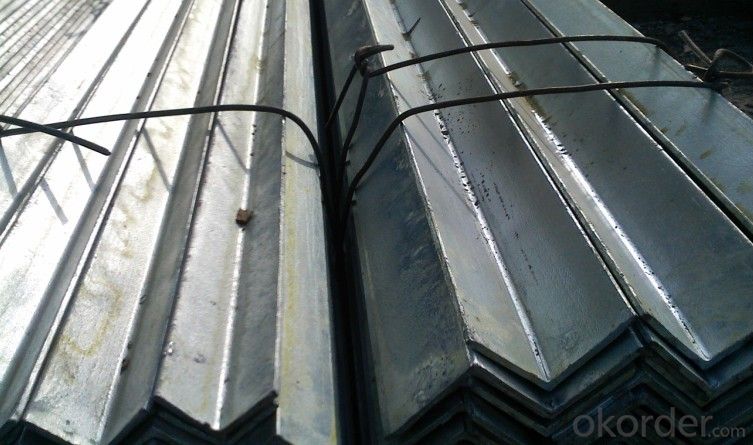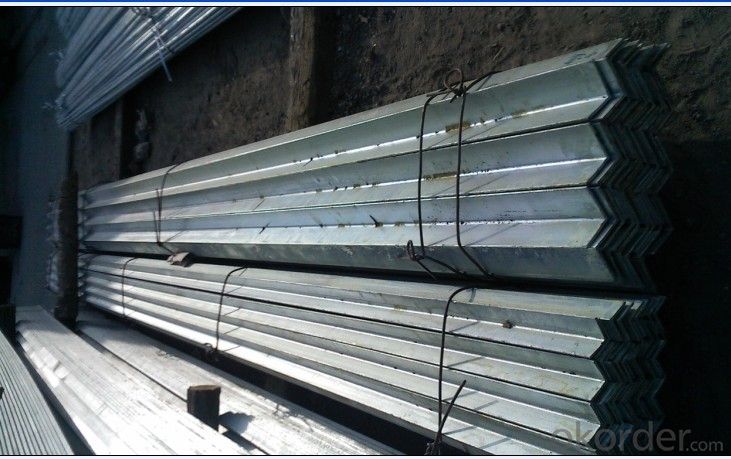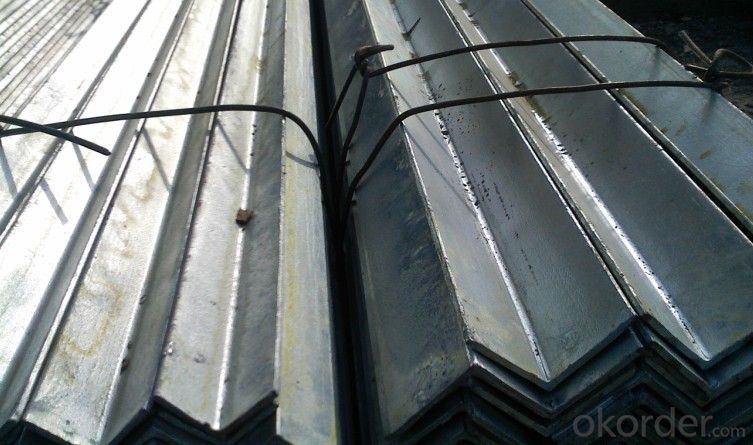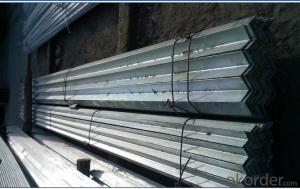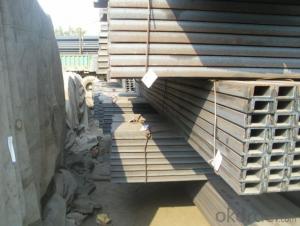GB Standard Hot Rolled Angle Steel
- Loading Port:
- China Main Port
- Payment Terms:
- TT or LC
- Min Order Qty:
- -
- Supply Capability:
- -
OKorder Service Pledge
OKorder Financial Service
You Might Also Like
Product Description:
OKorder is offering Angle Steel at great prices with worldwide shipping. Our supplier is a world-class manufacturer of steel, with our products utilized the world over. OKorder annually supplies products to European, North American and Asian markets. We provide quotations within 24 hours of receiving an inquiry and guarantee competitive prices.
Product Applications:
According to the needs of different structures, Angle can compose to different force support component, and also can be the connections between components. It is widely used in various building structures and engineering structures such as roof beams, bridges, transmission towers, hoisting machinery and transport machinery, ships, industrial furnaces, reaction tower, container frame and warehouse etc.
Product Advantages:
OKorder's Angle Steel are durable, strong, and resist corrosion.
Main Product Features:
· Premium quality
· Prompt delivery & seaworthy packing (30 days after receiving deposit)
· Corrosion resistance
· Can be recycled and reused
· Mill test certification
· Professional Service
· Competitive pricing
Product Specifications:
1. Invoicing on theoretical weight or actual weight as customer request
2. Length: 6m, 9m, 12m as following table
3. Sizes
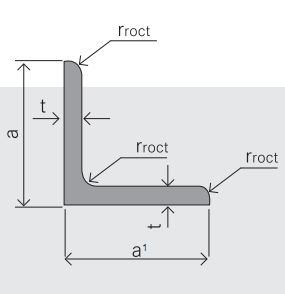
Sizes: 25mm-250mm | ||
a*t | ||
25*2.5-4.0 | 70*6.0-9.0 | 130*9.0-15 |
30*2.5-6.6 | 75*6.0-9.0 | 140*10-14 |
36*3.0-5.0 | 80*5.0-10 | 150*10-20 |
38*2.3-6.0 | 90*7.0-10 | 160*10-16 |
40*3.0-5.0 | 100*6.0-12 | 175*12-15 |
45*4.0-6.0 | 110*8.0-10 | 180*12-18 |
50*4.0-6.0 | 120*6.0-15 | 200*14-25 |
60*4.0-8.0 | 125*8.0-14 | 250*25 |
4. Payment terms:
1).100% irrevocable L/C at sight.
2).30% T/T prepaid and the balance against the copy of B/L.
3).30% T/T prepaid and the balance against L/C
5.Material details:
Alloy No | Grade | Element (%) | |||||
C | Mn | S | P | Si | |||
|
|
|
|
|
|
| |
Q235 | B | 0.12—0.20 | 0.3—0.7 | ≤0.045 | ≤0.045 | ≤0.3 | |
|
|
|
|
|
|
| |
Alloy No | Grade | Yielding strength point( Mpa) | |||||
Thickness (mm) | |||||||
≤16 | >16--40 | >40--60 | >60--100 | ||||
≥ | |||||||
|
|
|
|
|
| ||
Q235 | B | 235 | 225 | 215 | 205 | ||
Alloy No | Grade | Tensile strength (Mpa) | Elongation after fracture (%) | ||||
Thickness (mm) | |||||||
| ≤16 | >16--40 | >40--60 | >60--100 | |||
≥ | |||||||
|
|
|
|
|
|
| |
Q235 | B | 375--500 | 26 | 25 | 24 | 23 | |
FAQ:
Q1: How soon can we receive the product after purchase?
A1: Within three days of placing an order, we will begin production. The specific shipping date is dependent upon international and government factors, but is typically 7 to 10 workdays.
Q2: What makes stainless steel stainless?
A2: Stainless steel must contain at least 10.5 % chromium. It is this element that reacts with the oxygen in the air to form a complex chrome-oxide surface layer that is invisible but strong enough to prevent further oxygen from "staining" (rusting) the surface. Higher levels of chromium and the addition of other alloying elements such as nickel and molybdenum enhance this surface layer and improve the corrosion resistance of the stainless material.
Q3: Can stainless steel rust?
A3: Stainless does not "rust" as you think of regular steel rusting with a red oxide on the surface that flakes off. If you see red rust it is probably due to some iron particles that have contaminated the surface of the stainless steel and it is these iron particles that are rusting. Look at the source of the rusting and see if you can remove it from the surface.
Images:
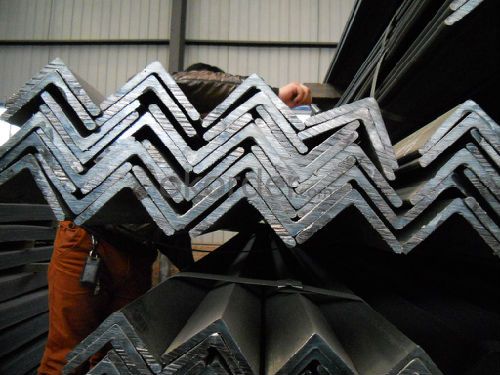

- Q: What is the typical yield stress of steel angles?
- The typical yield stress of steel angles can vary depending on the specific grade and type of steel being used. However, for commonly used carbon steels, the typical yield stress ranges from 36,000 to 50,000 pounds per square inch (psi). This means that the steel angles can withstand a certain amount of stress or pressure before they begin to deform or permanently change shape. It is important to note that different steel alloys and treatments can result in varying yield stresses, so it is necessary to consult the specific specifications or reference materials for the particular steel angle in question.
- Q: How do steel angles differ from other structural shapes?
- Steel angles differ from other structural shapes in that they have two legs that are perpendicular to each other, forming a 90-degree angle. This unique shape provides additional strength and stability, making steel angles ideal for applications that require structural support, such as construction, manufacturing, and engineering projects.
- Q: What are the different types of connections used for steel angles in educational institutions?
- In educational institutions, there are several types of connections used for steel angles. These connections serve to join steel angles together in various applications and structural configurations. Some of the common types of connections used are: 1. Welded Connections: Welding is a widely used method to connect steel angles in educational institutions. It involves melting and fusing the steel angles together using heat, creating a strong and durable connection. Welded connections are often used in structural applications where high strength and rigidity are required. 2. Bolted Connections: Bolted connections involve using bolts, nuts, and washers to secure steel angles together. This type of connection allows for easy disassembly and reassembly, making it suitable for applications where flexibility and adjustability are desired. Bolted connections are commonly used in non-structural applications like furniture, handrails, and brackets. 3. Riveted Connections: Riveting is an older method of connection, where steel angles are joined using rivets. Rivets are inserted through pre-drilled holes in the angles and then hammered or compressed to secure the connection. Although not as commonly used today, riveted connections can still be found in some older structures within educational institutions. 4. Clip Connections: Clip connections involve using specially designed clips or brackets to connect steel angles together. These clips are typically bolted or welded to the angles, providing a quick and efficient method of connection. Clip connections are often used in applications where easy installation and maintenance are important, such as suspended ceilings or modular structures. 5. Gusset Plate Connections: Gusset plate connections involve using additional steel plates (gusset plates) to connect steel angles. The gusset plates are typically welded or bolted to the angles, providing additional strength and stability to the connection. This type of connection is commonly used in heavy-duty structural applications, such as trusses or frames, within educational institutions. Overall, the selection of the type of connection for steel angles in educational institutions depends on factors such as the load requirements, structural design, ease of installation, and maintenance considerations. It is essential to consult with structural engineers and follow applicable building codes and regulations to ensure safe and appropriate connections are used.
- Q: How do you calculate the stability of a steel angle column?
- To calculate the stability of a steel angle column, a few key factors need to be considered. Firstly, the slenderness ratio of the column, which is the ratio of its effective length to its least radius of gyration, must be determined. This can be calculated using the formula: Slenderness ratio = (Effective length of column) / (Least radius of gyration) The least radius of gyration can be calculated using the dimensions of the angle section. For a steel angle, the least radius of gyration can be approximated as the average of the two legs of the angle section divided by the square root of 3. Once the slenderness ratio is determined, it is important to check whether the column is long or short. If the slenderness ratio is less than a critical value, typically around 50 for an angle column, it is considered short and the stability is primarily governed by its strength. In this case, the column can be designed based on its capacity to resist axial compression and flexural buckling. However, if the slenderness ratio exceeds the critical value, the column is considered long and its stability is primarily governed by its ability to resist lateral-torsional buckling. In such cases, additional calculations and considerations must be made to ensure the column's stability. For long angle columns, the critical load at which lateral-torsional buckling may occur can be calculated using various formulas and methods, such as the Euler formula, the Perry-Robertson formula, or finite element analysis. These calculations take into account various parameters such as the column's moment of inertia, modulus of elasticity, and the length of the column. It is important to note that stability calculations for steel angle columns can be complex and require expertise in structural engineering. It is recommended to consult with a qualified professional or refer to relevant design codes and standards, such as the American Institute of Steel Construction (AISC) Manual, for accurate and reliable calculations.
- Q: Can steel angles be used for HVAC systems?
- Yes, steel angles can be used for HVAC systems. They are commonly used as structural supports for ductwork, equipment mounting, and framework in HVAC installations. Steel angles provide strength and stability, making them suitable for various applications in HVAC systems.
- Q: Can steel angles be used as support brackets?
- Yes, steel angles can be used as support brackets. Steel angles are commonly used in construction for providing structural support and stability. They are versatile and can be easily attached to walls, floors, or other surfaces to create a strong and reliable support system. Steel angles are often used to support beams, joists, or shelves, and can also be used as corner brackets for reinforcing joints or connections. The strength and durability of steel make it an excellent choice for support brackets, ensuring that they can withstand heavy loads and provide long-lasting support.
- Q: Can steel angles be used in oil and gas pipeline installations?
- Yes, steel angles can be used in oil and gas pipeline installations. Steel angles are commonly used as structural supports in various industries, including the oil and gas sector. They provide strength and stability to pipeline installations, helping to ensure the integrity and safety of the infrastructure. Steel angles are known for their high strength-to-weight ratio, corrosion resistance, and durability, which make them suitable for demanding environments such as oil and gas pipelines. Additionally, steel angles can be easily welded or bolted together, allowing for efficient and cost-effective installation. Overall, steel angles are a reliable and commonly used component in oil and gas pipeline installations.
- Q: What are the typical lifespan and durability of steel angles?
- The lifespan and durability of steel angles can differ based on a range of factors, including the quality of the steel, the environment they are used in, and the level of maintenance they receive. However, steel angles are renowned for their exceptional durability and extensive lifespan. Generally, steel angles are engineered to bear heavy loads and provide structural support in various construction and industrial settings. They are typically crafted from either carbon steel or stainless steel, both of which are recognized for their strength and resistance to corrosion. With proper maintenance and protection against corrosion, steel angles can remain in good condition for many decades without significant deterioration. Regular maintenance practices such as cleaning, painting, and applying protective coatings can further extend their lifespan. The durability of steel angles is also influenced by the installation environment. In harsh environments with high levels of moisture, extreme temperatures, or exposure to chemicals, the lifespan may be shorter. However, implementing effective corrosion protection measures can mitigate these effects and ensure a longer lifespan. It is important to note that steel angles used in marine or offshore applications may have a shorter lifespan compared to those used in less corrosive environments. This is primarily due to continuous exposure to saltwater and severe weather conditions, which can expedite corrosion. To summarize, steel angles are renowned for their durability and can have a long lifespan if adequately maintained and protected against corrosion. However, the specific lifespan may vary depending on factors such as the steel quality, environmental conditions, and maintenance practices.
- Q: Can steel angles be used for load-bearing walls?
- Yes, steel angles can be used for load-bearing walls. Steel angles are commonly used in construction as a structural element to provide support and stability. They are often used to reinforce load-bearing walls by adding strength and rigidity. Steel angles can be used to distribute the weight of a load evenly, making them suitable for load-bearing applications. However, it is important to ensure that the steel angles are appropriately designed and installed to meet the specific load requirements of the wall. Consulting with a structural engineer or construction professional is recommended to ensure the proper use of steel angles for load-bearing walls.
- Q: What is the typical thickness tolerance for steel angles?
- The thickness tolerance for steel angles may vary based on manufacturing standards and requirements. Typically, steel angles have a thickness tolerance ranging from +/- 0.005 to 0.010 inches (0.13 to 0.25 mm). Nevertheless, it is crucial to consider that the tolerance can be affected by the size and dimensions of the angle. Larger and thicker steel angles may have slightly more lenient tolerances compared to smaller and thinner angles. To determine the precise thickness tolerance for a specific steel angle, it is advisable to refer to the appropriate industry standards or specifications.
Send your message to us
GB Standard Hot Rolled Angle Steel
- Loading Port:
- China Main Port
- Payment Terms:
- TT or LC
- Min Order Qty:
- -
- Supply Capability:
- -
OKorder Service Pledge
OKorder Financial Service
Similar products
Hot products
Hot Searches



